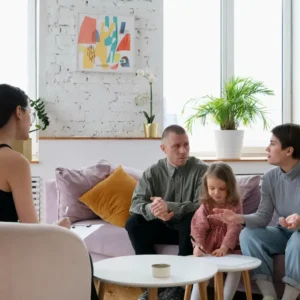Source: https://biodynamicbreath.com/blog/breathwork-near-me/
It often starts with a simple search: “breathwork near me”. But what you’re really seeking is more than a location — you’re seeking connection, transformation, and access to a practice that can shift your life. In 2025, breathwork isn’t just a trend—it’s a potent, evidence-informed practice that safely supports nervous-system regulation, emotional release and deeper presence. Whether you’re curious about in-person sessions or online formats nearby, this guide will walk you through what to look for, what to expect, and how to turn your search into real healing.
Why “Breathwork Near Me” Matters
When you click near me, you’re asking for convenience, accessibility, and belonging. A local breathing class offers:
- The ease of dropping in without long travel or unfamiliar settings.
- The benefit of live human facilitation (which strengthens safety and depth).
- The community energy of others gathering, sharing, practicing together.
At BBTRI, the idea is simple: no matter where you are, you should be able to access high-quality, trauma-informed breathwork that meets you where you are.
What Happens in a Breathwork Session
In a typical class, you’ll start by arriving (or logging in), settling into your body and breath. The facilitator will guide you through:
- Gentle body-scanning or loosening movement to release tension.
- Connected breathing cycles — often deeper, slower, more conscious than usual.
- Supportive prompts of sensation, awareness, sometimes sound, movement or touch (depending on format).
- A period of integration — rest, reflection, journalling or community sharing.
Clients often report: a sense of lightness, decreased stress, improved sleep, clearer thinking, or simply a fresh sense of presence in the body.
Who Benefits From Local Breathwork
Breathwork isn’t just for yogis or meditators. It’s for everyone who breathes, and especially:
- Professionals juggling heavy demands and needing nervous-system reset.
- Parents and caregivers seeking quicker, deeper recovery from stress.
- People with sleep issues, fatigue, tension, anxiety or trauma history.
- Those already practicing wellness and wanting to go deeper with embodied presence.
Because you’re looking for “near me”, the local accessibility removes one big barrier — making it easier to integrate the practice into your routine.
How to Choose the Right Class
Since you have many options, here are factors to compare:
1. Facilitator Credentials & Safety: Ensure the facilitator is trained in trauma-informed breathwork (BBTRI uses the BBTRS® system).
2. Format – In-Person vs Online: In-person gives embodied contact; online gives flexibility and home comfort.
3. Location & Accessibility: How easy is it to get there (or log in)? Circular or convenient timing increases your likelihood of showing up.
4. Class Size & Atmosphere: Smaller, well-held groups allow more individual attention; a bigger group may feel more energetic but less intimate.
5. Aftercare / Integration: What happens after the active breathing phase? A good session includes time to ground, integrate and ease back into your day.
Common Myths — and Realities
- Myth: “You must be experienced or super flexible.”
Reality: Breathwork is accessible to beginners and can be adapted to all bodies and levels. - Myth: “It’s just deep breathing.”
Reality: At BBTRI and similar trauma-informed spaces, breathwork is combined with movement, body awareness, nervous-system regulation and integration — making it far more than simple breathing. (BBTR Institute) - Myth: “It replaces therapy.”
Reality: It can be complementary, but if you’re working with deep trauma or psychiatric issues, integrate with your therapeutic care.
Integrating the Practice Into Daily Life
The real value lies in what you do after the class. Here are micro-practices to build:
- Morning reset: 3-5 minutes of slow, full-bodied breath to center your day.
- Transition pauses: Before a meeting, commute or big task — take 5 conscious breaths.
- Evening unwind: Use a gentle breath pattern (e.g., 4-7-8) to signal rest and recovery.
- Mini “breath check-in” alerts: Whenever you notice tension, take 3-5 connected breaths and soften.
Over weeks and months, these build nervous-system resilience, calmer reactivity and greater presence in your body.
What to Expect From A Local Class
- You arrive (or login) and settle in.
- A short orientation: What to expect, how to be safe, what the session will include.
- Movement or simple warm-ups to release physical holding.
- Guided breathing cycles, often in pairs/mini-groups for support.
- Rest and integration at the end.
- Optional sharing/closing circle if in-person.
You may feel sensations such as tingling, heat, emotional release — these are common. Bring curiosity, not judgment.
Why Now is a Great Time
In a world of constant stimulation, many of us live in sympathetic-dominant states (fight/flight). Training your system toward regulation (parasympathetic) has massive downstream impact: less anxiety, better sleep, deeper relationships, more creativity and focus. Searching “breathwork near me” is your first step toward accessing that regulation.
Taking the Next Step
- Choose your neighbourhood or time-zone to find a local class or online session.
- Bring an open mind and comfy clothing.
- Treat it like an appointment for yourself — you deserve it.
- After the class, reflect: What did you feel? What shifted? How could you integrate 10 minutes tomorrow?
- Consider regularity: once is great, but regular sessions amplify the benefit.
📞 Contact Information
Ready to find a class near you or attend an upcoming schedule with BBTRI? Here are the contact details:
- Email: info@biodynamicbreath.com (via website) (BBTR Institute)
- Phone / Address: BioDynamic Breath & Trauma Release Institute — 1640 Ocean Ave, Brooklyn, NY 11230, USA. Phone: +1 (917) 829-3324 (MapQuest)
- Website: https://biodynamicbreath.com (BBTR Institute)
Feel free to contact them to ask: upcoming classes in your region, online vs in-person options, pricing, beginner-friendly sessions, and how to prepare.
Final Thoughts
Searching “breathwork near me” is more than convenience — it’s a bridge toward deeper self-connection, nervous-system regulation and embodied presence. Whether you arrive at your first session curious or cautious, you’ll likely walk away changed — physically lighter, mentally clearer, more grounded. Over time these shifts accumulate. If you’re ready to make breath a tool, not just a reflex, then show up. Your system will thank you.
Explore the local classes, reach out for a trial, and step into your breath with intention.




